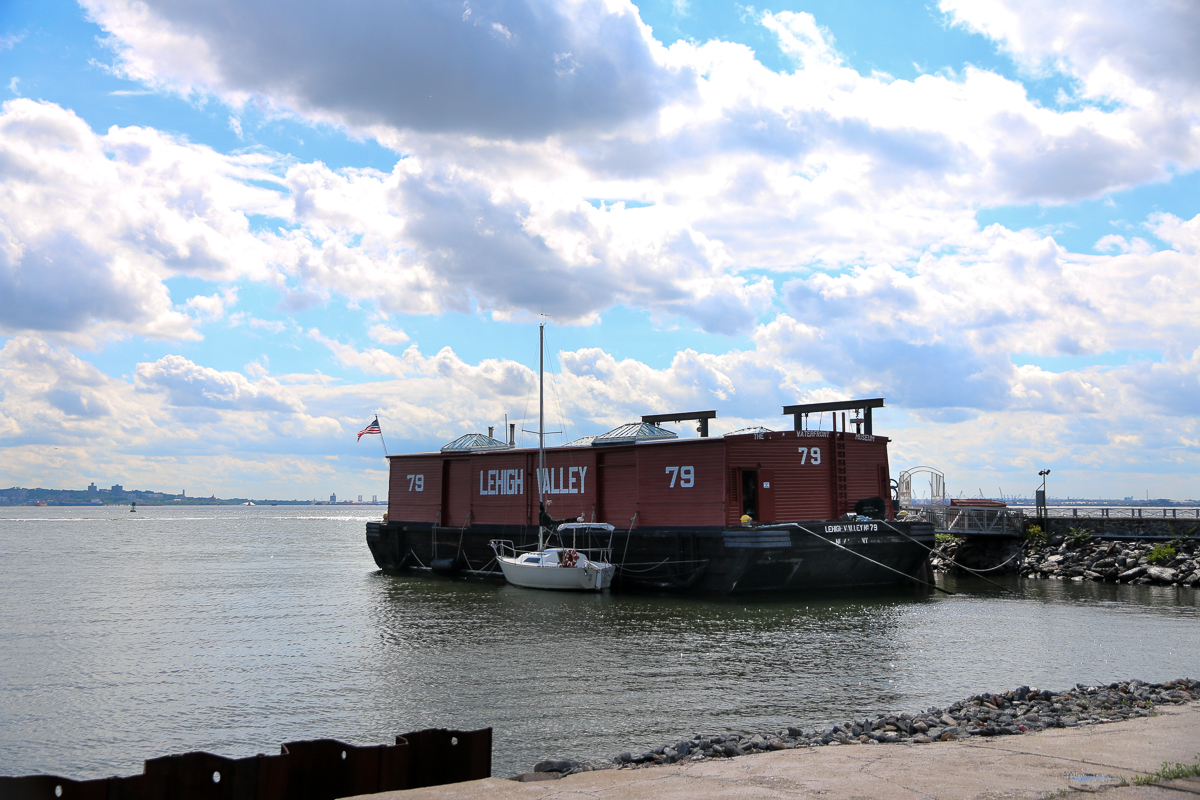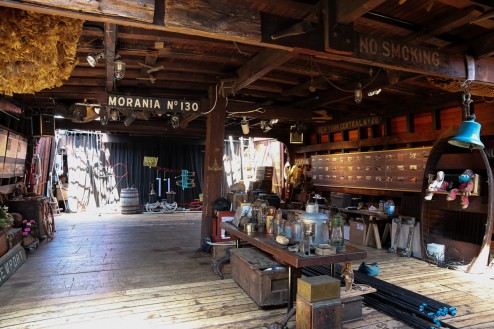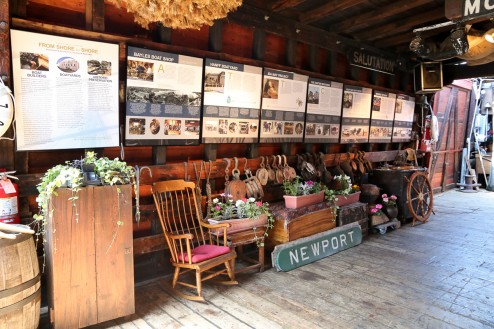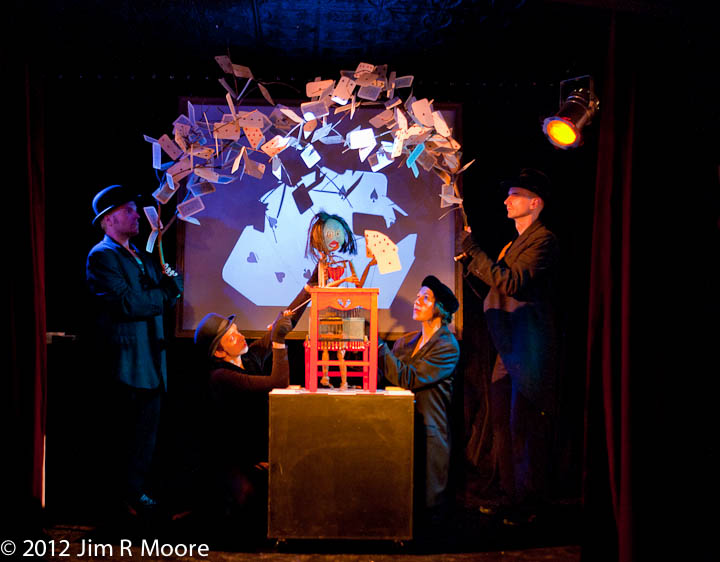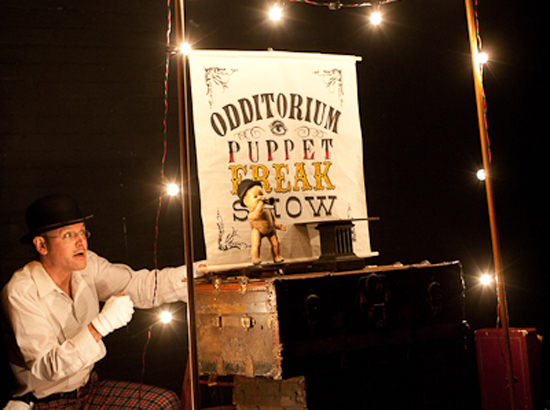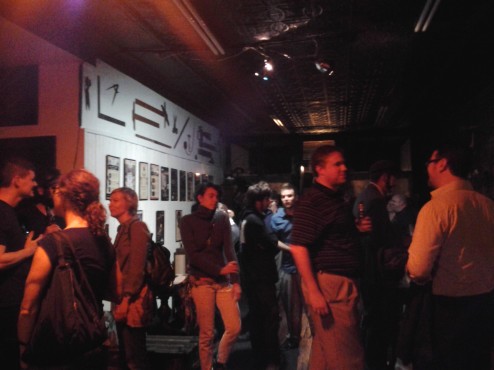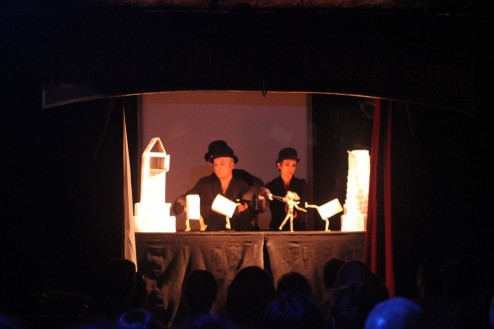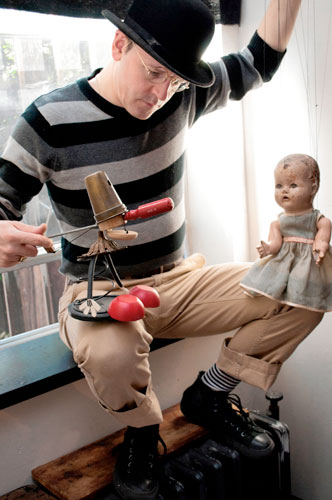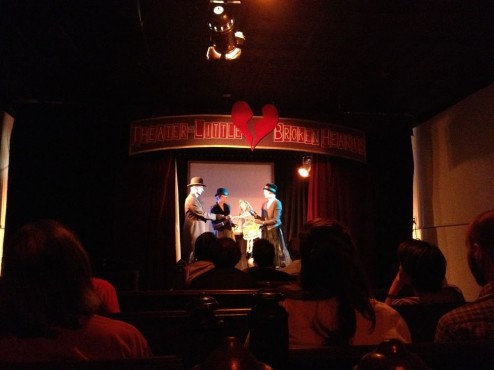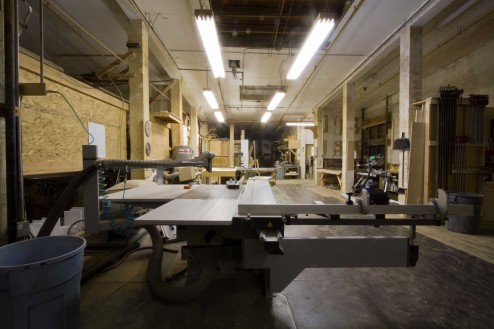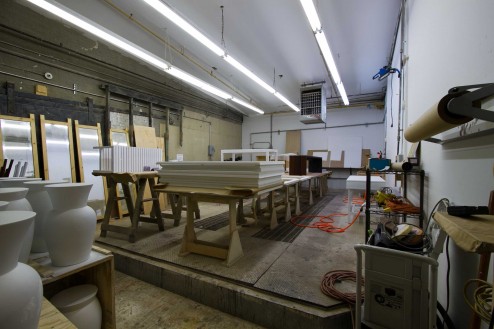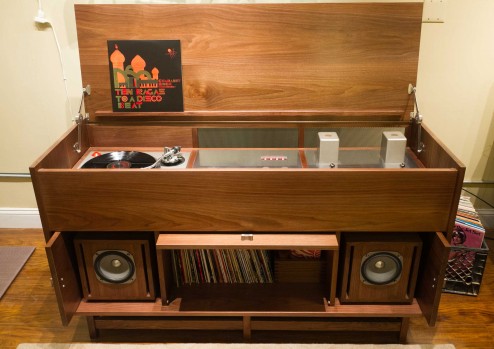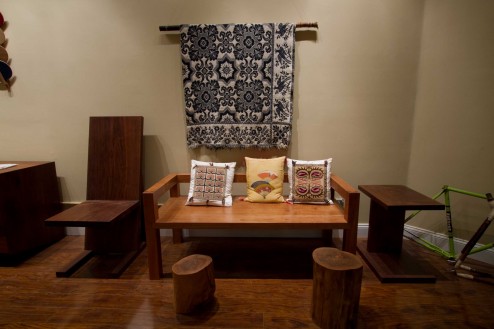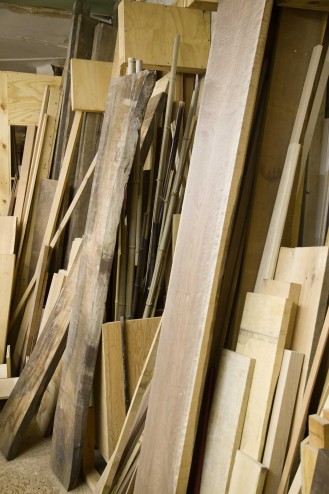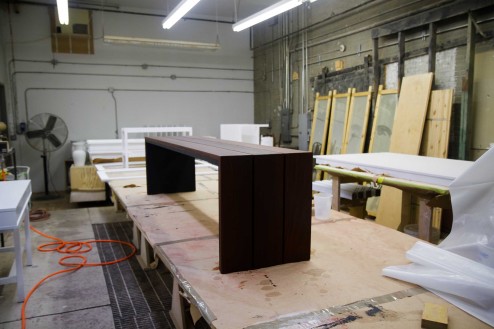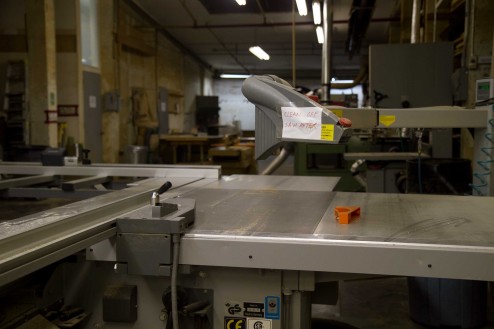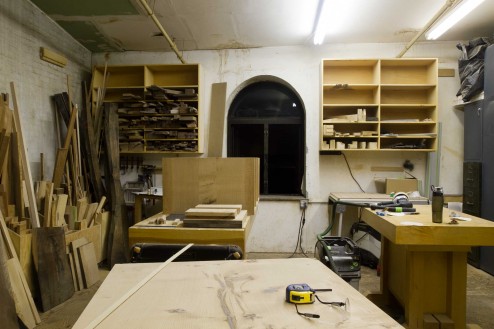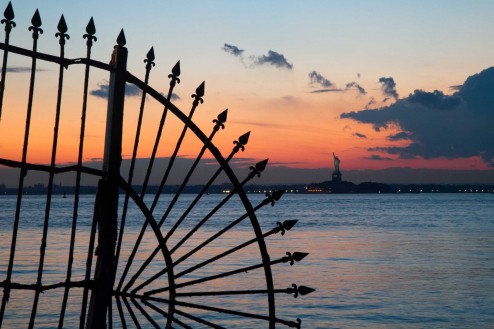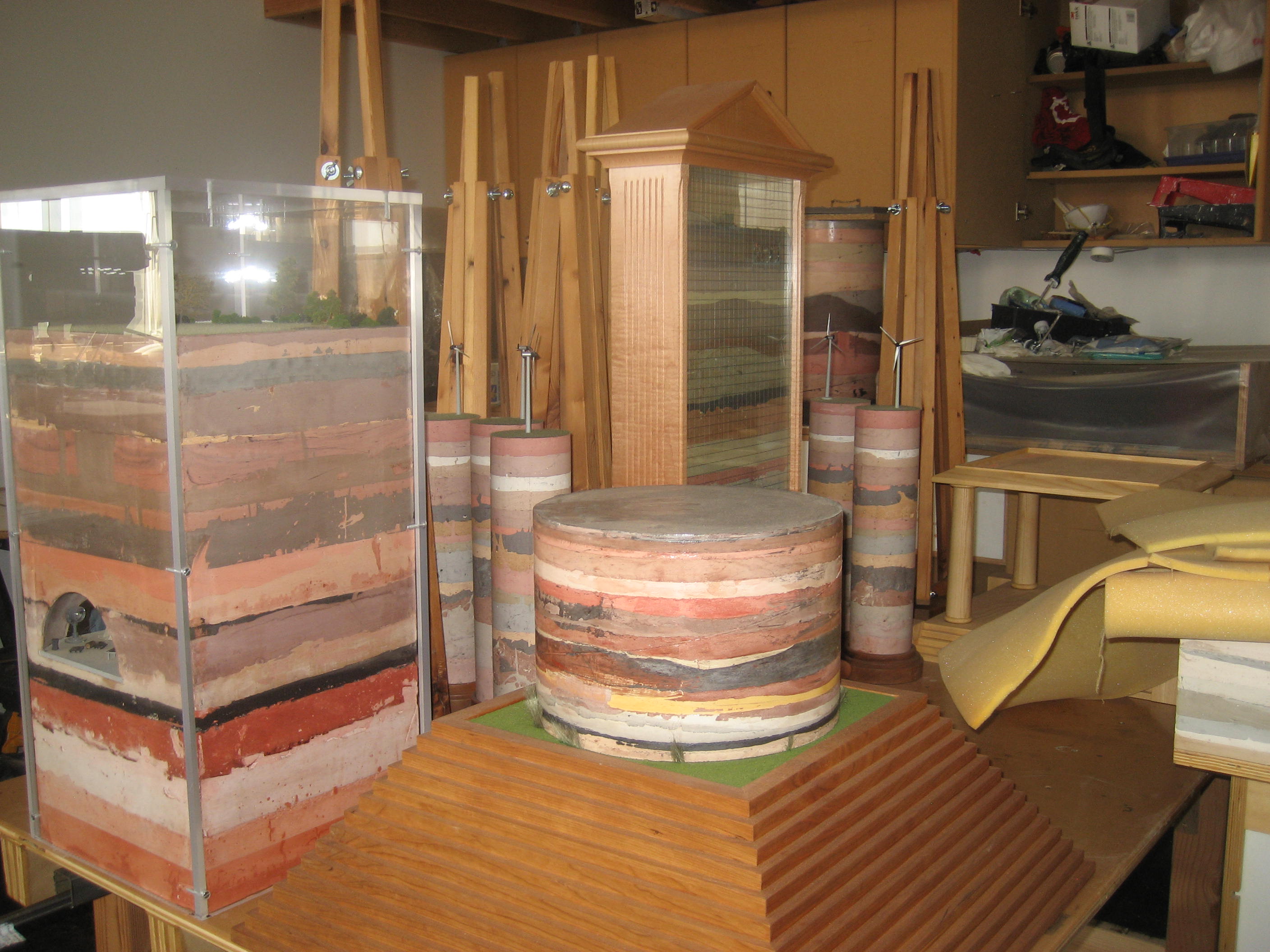space type: nonprofit, skillshare, gallery | neighborhood: red hook | active since: 2012 | links: website, facebook, twitter, wikipedia
Pioneer Works is huge. It’s around 27,000 square feet with 40-foot ceilings, which is just truly, absolutely enormous. The building dates back all the way to 1866, and for more than a century was home to Pioneer Iron Works, one of the largest machine manufacturers in the country.
Prominent Brooklyn artist Dustin Yellin bough the building in 2010. As he told the New York Times, “My crazy dream is to create a kind of utopian art center.” And Pioneer Works is something pretty close to that dream. The nonprofit has several elements, including a massive exhibition gallery and event space (one of the biggest in the city), classes and workshops, a science lab with a powerful photographic microscope, artist residencies, institutional residencies (currently the Clocktower Gallery), a radio show, and a modern art periodical called Intercourse Magazine.

all photos by Maximus Comissar
The events range from open studios to lectures (“How to Fake Your Own Death” is popular and recurring), from Hackathons to concerts, with musical acts like Spiritualized, Ariel Pink, and Omar Souleyman. And the classes are equally varied—some recent examples include “Physical Storytelling,” “The Alchemy of Light,” “From Tesla to the Transistor,” “Homebrew Kimchi,” “NY Theremin Society Workshop,” and “Lock-Picking and Open-Source Security.”
So get out to Red Hook and learn something! But first read the Q&A with David, Pioneer Works’ Director of Education.

brooklyn spaces: Tell me a bit about the history of this building.
David: Okay! I know this because we had a Red Hook history class here recently. It was built in 1866, then in 1871 it burned down, and it was rebuilt in 1872. It was originally Pioneer Iron Works, one of the biggest iron works in the country. After that it was a tobacco-drying warehouse. Then they were doing something manufacturing until the 1950s; whatever they were making was super heavy, so they had this system to move it all around in here, and rollers set into the floor to roll it out the door. And then since the 1960s it was used to store financial records. When Dustin bought it, there was no heat, no running water, minimal electricity. The windows were all bricked up, the floors were wrecked, the staircases were terrifying. It took about a year of heavy work to get it into shape.

brooklyn spaces: I love that uniquely artist vision of walking into a completely decrepit space and saying, “I can see what this is going to be.” It’s like that quote about sculptors, how they look for the piece within the marble and then let it out.
David: Exactly. Dustin was like, “All right, this building is my next piece of art.”

Dustin Yellin sculpture
brooklyn space: How did you become involved?
David: I was teaching high school and really wanted to quit, so when Dustin presented me the opportunity to start a teaching program here, I thought I’d give it a shot. So we started, and it went really well in the summer, and then it went really well in the fall, and then Hurricane Sandy happened, and it just totally knocked us out. This whole building was like shoulder-deep in water. We tried to keep doing classes even though we had very little power and no heat—I bubbled in the classroom, like in ET, just encased it in plastic curtains, and we put in as many heaters as we could without blowing the circuits, but it was still so, so cold. We didn’t get heat until March, so that’s when we finally started doing classes again. Since then, we’ve just been growing and growing and growing.

brooklyn spaces: How would you classify the different kinds of classes offered here?
David: They’re pretty different, but it’s basically stuff that’s either really new or really old. We do cutting-edge stuff like microcontrollers and 3D printing and upgrading the firmware in your camera; those are for artists, designers, software developers, to demystify the process of new technologies that everyone wants to know how to use. And then we do old stuff, like paper marbling, or wet-plate or tintype photography, which is Civil War era. It’s to a similar aim as the newer stuff: giving artists a new vocabulary and a specialized practice.

brooklyn spaces: Do you come up with an idea for a class and then go out and find a teacher? Or do people bring you ideas?
David: Both. The lock-picking class, which is super popular, came about because I saw a lock-picking tent at Maker Faire—although tracking down someone who picks locks for a living was really hard. Then on the other hand, a woman came by the other day who wants to do a bread-baking class. We were like, “But we have no ovens, we have no flat surfaces, we don’t have anything.” And she was like, “It’s okay, we can make it work. How about we cook the bread on sticks over a fire?” We’ll try basically anything if it seems cool and the teacher seems competent.

brooklyn spaces: There seems to be a strong movement in Brooklyn for these kinds of classes and skillshares, as evidenced by the extreme popularity of places like 3rd Ward and Brooklyn Brainery. Why do you think that is? Do people just want to have more hobbies?
David: I think it’s deeper than that. Demystifying processes is so enabling. There’s a huge movement of open-source hardware and software in the tech world, and I think part of that is because we’re so controlled by the companies that make the technology we use. The fact that you can’t just open an iPhone and replace the battery is a conscious choice on their part. It’s not because oh you might do it wrong; it’s to keep you under their control. The open-source movement puts the power back in the hands of the individuals, and I think people are used to that idea now, so by applying that model to education, we’re unlocking it a bit. And I think it’s going to continue to grow.

brooklyn spaces: With so many choices, do you think they’re beginning to overlap? What makes Pioneer Works’ offerings unique?
David: I mean, maybe there’s some overlap with what 3rd Ward was doing, but we have something that they didn’t have.
brooklyn spaces: Integrity?
David: Oh yeah, well there’s that. But also we’re a nonprofit and they were a for-profit, which makes a huge difference. We’re an arts institution; it’s just a very different kind of space. Plus we have the nicest building. Once people come here once, it’s not hard to get them to come back.

brooklyn spaces: Do you think being in Red Hook has had an influence on how the space has developed?
David: Sure. There’s such a strong community here, and a real neighborhood feel, like I’ve never experienced anywhere else in New York. We’re trying to find ways to use this space as more of a community center. At the end of April we did a twenty-four-hour hackathon that was Red Hook themed. Business owners from the neighborhood gave us challenges, and all the tech people competed to make apps to address those issues. Pizza Moto catered the event. I love those guys—after the flood they came down to Van Brunt Street when nobody had any power and just started cooking pizzas for free, out on the street under the police lights.

brooklyn spaces: What are some of your future goals for the space?
David: We’re building a lot of relationships with terrific groups like Invisible Dog and Generally Assembly and Fractured Atlas. We don’t know what we’re going to do with them yet, but we’re kicking around ideas. We’re also starting to collaborate in a bunch of ways with Brooklyn Museum, which is perfect because they want to be linked to a gallery and we want to be linked to an institution. Obviously we don’t want to be a museum, but the way they’re organized and the integrity they have, I think it’s a really great model for us.
***
Like this? Read about more skillshares: Brooklyn Brainery, Exapno, Time’s Up, Ger-Nis Culinary Center, Lifelabs, UrbanGlass, 3rd Ward
